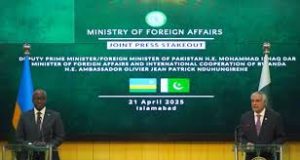Wedding tourism grows in Italy

Rome: Italy’s Wedding Tourism sector enjoys great statistics for 2018. According to a recent study, Italy
hosted over 8,700 events for an estimated turnover of € 500.1 million last year.
The survey was carried out by Centro Studi Turistici di Firenze on behalf of Convention Bureau Italia. It was
presented on 13 March in Rome in the magnificent setting of Palazzo Naiadi. Participating were Carlotta
Ferrari, president of Convention Bureau Italia, Giorgio Palmucci, president of ENIT, the National Agency of
Tourism and Alessandro Tortelli, scientific director of Centro Studi Turistici di Firenze.
The study data were obtained from the analysis of more than 1,600 questionnaires and telephone interviews directed at operators in the sector.
Among the information that emerged was the need for specialized training for the wedding sector: more than 60% of the wedding planners interviewed were interested in participating in training courses.
According to data compiled, there were 8,791 foreign weddings celebrated in Italy in 2018, a phenomenon that generated over 436,000 arrivals and over 1.5 million room nights, which was respectively + 6.8% and + 7.4% over the 2017 figures, with particularly positive results for the South and the Islands. The average number of guests per event was 49.6 and the average expenditure was € 56,890, for a total turnover estimated at 500.1 million euros. Worthy of note is that the celebrations tend to occupy an increasing number of days in addition to the wedding day itself, turning them into small trips.
The “typical wedding” is celebrated in luxury hotels, mainly in the summer months (especially June and
September) and with religious or symbolic rites. The so-called “same-sex wedding”, LGBTQ weddings, is
also on the rise: growth was + 64% compared to 2017 and the phenomenon now represents 12% of the market.
In 2018 foreign couples came mainly from the United Kingdom (28.1%), the USA (21.9%), Australia (9.4%),
Germany (5.5%) and Canada (4.5%). However, weddings of other nationalities which though less frequent had
a greater economic impact: among them were those from the Scandinavian countries, Indonesia and the Arab
Emirates.
The regions preferred by foreigners were Tuscany (30.9%), followed by Lombardy, Campania, Veneto, and
Lazio but Puglia and Sicily have become strong contenders in recent years.
As for the locations, besides luxury hotels (31.9%), villas, holiday farms, castles, and restaurants were
popular. Locations with growing demand include “Masserie”, “Alpine Lodges” and “Beaches”.
Finally, it should be noted that wedding tourism is increasingly an online phenomenon, both for operators and customers: if, for the hospitality structures interviewed, search engines (23%) turn out to be the first channel for acquiring contacts, then for the planners it is the social network (24.8%); on the customer side, instead, the use of the internet is growing in order to share the wedding with a dedicated hashtag on social media and the creation of mini wedding sites.
More than 60,000 operators work in the wedding sector in Italy, a growing phenomenon in recent years.
Among these are numerous wedding planners, for whom the need for qualified training appears increasingly crucial.
According to the findings of the CST Firenze survey, 29.7% of surveyed wedding planners participated in specific training courses for the sector in 2018, while a good 60.7% would be interested in participating in the future.
According to the operators interviewed, the destination wedding expectations for 2019 are for further growth
in demand, estimated between +5 and + 10%. The greatest increase is expected in certain areas of Southern Italy, such as Puglia, Sicily, and Basilicata.
Emerging markets are also expected to grow strongly in terms of turnover, especially from the United Arab Emirates and the Far East.
Carlotta Ferrari, president of Convention Bureau Italia, observes: “It is undeniable that Destination Weddings
is increasingly asserting itself as a sector in its own right, bursting on the national scene with a similar impact of other lucrative business sectors such as MICE and Luxury, generating tourist flows of a very high quality and economic value. With this consideration, CBItalia took the initiative for a systematic inquiry to analyze the needs and potentials of this industry. From this assessment, two objectives outlined themselves. Firstly, there is a clear need for targeted training, dedicated not only to sector operators but to the entire supply chain, to recognize and take advantage of new opportunities in a high-value business.
In light of this, the second objective aims to create necessary national coordination of supply and promotion, especially in the medium and long-range. I believe that the collaboration between CBItalia and ENIT which we have been constantly improving on with regards to MICE is a winning combination. “
Giorgio Palmucci, president of ENIT – National Tourism Agency, on his part, states: ” The relaunch of ENIT activities inevitably requires a careful analysis of both the markets of tourist provenance as well as of the
many segments that make up tourism. Assuredly, the Wedding Industry is one of those segments that in the last few years has had a notable growth. We, therefore, acknowledge the value of the Convention Bureau Italia
analysis and consider it fitting for joint coordination of commitment at a national level.”





